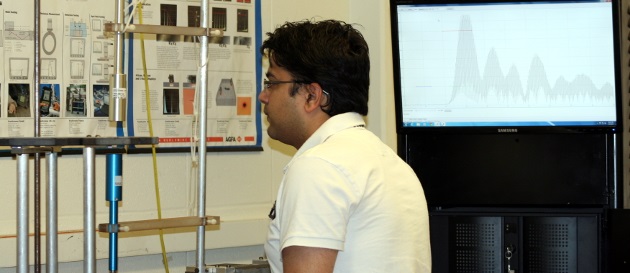Air-Coupled Ultrasonic Testing
Main Content

This ultrasonic NDE technique is a non-contact method of inspecting non-homogeneous materials using air as a coupling agent. Air-coupled ultrasonic testing (ACUT) has proven to be an efficient and cost effective NDE method in determining and characterizing defects in C/C composites. The experimental approach includes shear wave, plate wave, pseudo pulse-echo, and through transmission configurations. The air-coupled transducers are driven by a high-energy rectangular tone burst signal. The receiver probe has a built-in low noise preamplifier as well as a narrow-band filter unit. The combination of these allows low-noise amplification. As a result, no additional averaging of the signal is required and fast scanning is possible. In addition, C-scan air-coupled instrument and software combines the ultrasonic pulser/receiver with the motion control and data acquisition by using the same bus. Rather than collecting just amplitude, it saves complete A-scans for each single pixel of the C-scan image. Post-processing of the C-scan allows the varying gate positions and other parameters, after the scanning process.
Capability:
- Shear wave, plate wave, pseudo pulse-echo, and through transmission measurements.
- Data collected through Airstar Bondline software.
- AS 2100 pulser / receiver.
- Air-couple transmitter and receiver: 50 kHz - 500 kHz
- Scan frame: 2570mm long X 2070mm wide X 1000mm high.
- Full motion control: motorized X-, Y- and Z- axes.
- Circular scan, any diameter disks adjustable.
- Accurate A-scan, B-scan and C-scan.
Application:
- Composites, Ceramics, and Polymers.
- Carbon/Carbon composites.
- Carbon/Epoxy composites.
- Graphite-epoxy sandwich panels.
- Automotive clutch facings.
- Automotive brake pads.
- Asphalt concrete.
- Pultruded materials, wood, and rubber (tires).



